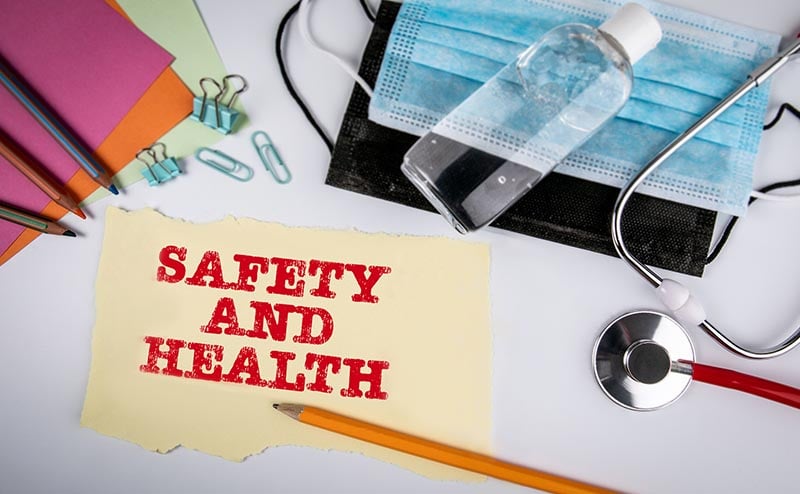Last week, the Occupational Safety and Health Administration (OSHA) released its long-awaited emergency temporary standard (ETS) for COVID-19. President Biden had issued an Executive Order in January requesting that OSHA look into establishing a COVID-19 ETS and, if necessary, release one by March 15. It became clear a while ago that OSHA had decided to issue an ETS, but due to the changing nature of the virus and the constantly evolving Centers for Disease Control and Prevention (CDC) guidance, the agency kept on delaying the release date. While the ETS was originally going to apply to all businesses, the Biden Administration ultimately decided to limit it to health care facilities—where "suspected or confirmed COVID-19 patients are treated."
Since the ETS is extremely long (44 pages of regulatory text and over 900 pages of background information), I want to provide you all with an overview of the ETS and describe specifically how it will impact you as emergency physicians. First, it is important to note that OSHA standards are stronger than simply guidelines or recommendations—they are requirements that health care “employers” must institute to protect their employees, and they are enforceable (i.e., employers are subject to fines if found to be non-compliant). Although there is some ambiguity on whether the ETS applies to some less-defined “health care” settings, hospitals clearly must follow the new rules and emergency medical services are also covered.
As an emergency physician, you yourself are not responsible for meeting the ETS requirements—your employer is. Understanding that there are multiple different employment structures in emergency medicine (and across health care in general) and that employees of different employers can share the same physical location, the ETS requires each employer to coordinate with the host employer to ensure that all requirements of the standard are met. In all, if you are employed directly by the hospital, your hospital is clearly responsible for meeting the requirements on your behalf. However, if you work in a group practice and are not directly employed by your hospital, it will be up to your group practice to work with your hospital to decide how it will meet all the ETS requirements. If you are an independent contractor, the hospital in which you work will be responsible for meeting all the requirements within the ETS.
The ETS includes a host of requirements that are meant to protect you as a health care worker and your patients. Most of the requirements are protocols your employer may have already put in place (given that we are a year and a half into the pandemic)! Here are some of the key requirements:
- COVID-19 plan: Develop and implement a COVID-19 plan to minimize the risk of transmission of COVID-19 to employees.
- Patient screening and management: Limit and monitor points of entry to settings where direct patient care is provided and screen and triage patients.
- Standard and Transmission-Based Precautions: Develop and implement policies and procedures to adhere to “Standard and Transmission-Based” precautions based on CDC guidelines.
- Personal protective equipment (PPE): Provide and ensure each employee wears a facemask when indoors and when occupying a vehicle with other people for work purposes; provide and ensure employees use respirators and other PPE for exposure to people with suspected or confirmed COVID-19, and for aerosol-generating procedures on a person with suspected or confirmed COVID-19.
- Physical distancing and barriers: Keep people at least 6 feet apart when indoors and install cleanable or disposable solid barriers at each fixed work location in non-patient care areas where employees are not separated from other people by at least 6 feet.
- Cleaning and disinfection: Follow standard practices for cleaning and disinfection of surfaces and equipment in accordance with CDC guidelines in patient care areas, clean high-touch surfaces, and equipment at least once a day and provide alcohol-based hand rub or provide readily accessible handwashing facilities.
- Aerosol-generating procedures on a person with suspected or confirmed COVID-19: Limit employees present to only those essential; perform procedures in an airborne infection isolation room, if available; and clean and disinfect surfaces and equipment after the procedure is completed.
- Ventilation: Ensure that employer-owned or controlled existing HVAC systems are used in accordance with manufacturer’s instructions
- Health screening and medical management: (1) Screen employees before each workday and shift; (2) Require each employee to promptly notify the employer when the employee is COVID-19 positive, suspected of having COVID-19, or experiencing certain symptoms; (3) Notify certain employees within 24 hours when a person who has been in the workplace is COVID-19 positive; (4) Follow requirements for removing employees from the workplace; (5) For employers with more than 10 employees, provide medical removal protection benefits in accordance with the standard to workers who must isolate or quarantine.
- Vaccination: Provide reasonable time and paid leave for vaccinations and vaccine side effects.
- Training: Ensure all employees receive training so they comprehend COVID-19 transmission, tasks and situations in the workplace that could result in infection, and relevant policies and procedures.
- Recordkeeping: Establish a COVID-19 log (if more than 10 employees) of all employee instances of COVID-19 without regard to occupational exposure and follow requirements for making records available to employees/representatives.
- Report work-related COVID-19 fatalities and in-patient hospitalizations to OSHA.
Interestingly, the ETS exempts fully vaccinated workers from masking, distancing, and barrier requirements when in well-defined areas where there is no reasonable expectation that any person with suspected or confirmed COVID-19 will be present. This means that hospitals could theoretically designate certain rooms (such as conference rooms or employee break rooms, etc.) where fully vaccinated staff could take off their masks and not practice social distancing. However, it is clear that masks would be required at all times in the emergency department since it would be impossible to guarantee that everyone present does not have COVID-19.
The ETS is effective immediately upon publication in the Federal Register (which should be in the next few days). Employers must comply with most provisions within 14 days, and with provisions involving physical barriers, ventilation, and training within 30 days. OSHA will continue to monitor trends in COVID-19 infections and deaths as more of the workforce and the general population become vaccinated and the pandemic continues to evolve. If OSHA determines that a grave danger from the virus no longer exists for the covered workforce (or some portion of it), or new information indicates a change in measures necessary to address the virus, OSHA will update the ETS.
For more information on the ETS, please click here. OSHA has also posted a number of FAQs. I also encourage you to talk to your employer about how it plans on meeting the ETS requirements.
Before concluding, you should all know that, like other OSHA standards, there is a process for submitting complaints if you feel like your employer is not following the requirements (once they become effective). You can go here to issue an OSHA complaint and here to submit a whistleblower complaint. There is also clear anti-retaliatory language in the ETS, which makes it illegal for your employer to fire you or in any way discriminate against you for speaking out and identifying areas of potential non-compliance. Please feel free to reach out to me if you have any questions about the standards themselves or, down the road, about potentially submitting an OSHA complaint against your employer.
Until next week, this is Jeffrey saying, enjoy reading regs with your eggs.






